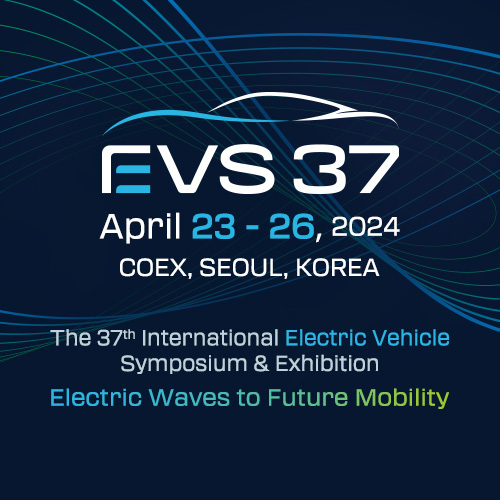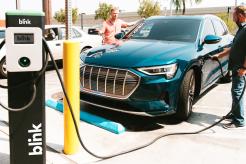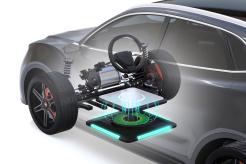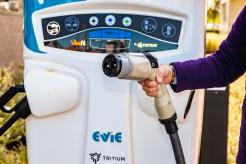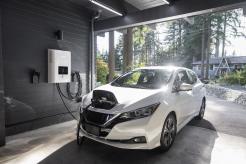Home to 20 percent of U.S. residents, rural areas across the U.S. host nearly 70 percent of American road miles. Residents drive more than urban dwellers, spend more on fueling and maintaining their vehicles, and have much less access to public transit. EVs can play a huge role in helping rural residents reduce their transportation costs and the associated environmental impact.
Yet, the U.S. is currently the world’s third-largest EV market, behind China and Europe. Public charging stations are essential to achieving a large-scale national transition to EVs and to eventually phasing out gas-fueled vehicles altogether. We can only accomplish this norm when we have charging infrastructure strategically placed across the country to enable EV transportation to and from any point.
The Infrastructure Investment and Jobs Act, signed into law in November 2021, contains $7.5 billion in new funding for EV charging stations and related infrastructure. The plan is to build an equitable network of 500,000 EV chargers across 75,000 miles of designated corridors across the U.S., benefiting rural communities as much as more highly populated areas.
Transportation officials in rural states are concerned that the federal initiative to create a nationwide EV charging network may prove impractical for remote areas. They are asking the Federal Highway Administration to reduce its requirements for:
- The number of chargers per station (currently a minimum of 4)
- The distance between stations (currently 50 miles)
- The minimum amount of power that much be available at each charging site (now 600 kW)
Despite those concerns, by September 2022, the U.S. Transportation Department approved EV charging station plans for all 50 states, Washington, D.C., and Puerto Rico, which meet the 75,000-mile goal.
Here are some of the projects and initiatives laying the groundwork for developing rural EV charging infrastructure (even before the Infrastructure Investment and Jobs Act became law).
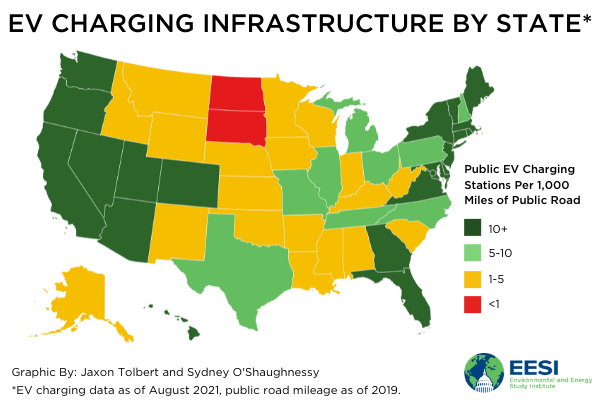
(Image Source: EESI)
General Motors Rural Charger Program
In 2021, General Motors announced the goal to sell only zero-emission passenger vehicles by 2035. To support that goal, GM announced in 2022 that it would install 40,000 public EV chargers throughout rural areas across the country. Charging station sites will focus on locations where EV drivers tend to park for a few hours, such as sports venues, retail centers, and parks.
Through the GM Dealer Community Charger Program (DCCP) and in partnership with the Flo charging network, GM dealers will install Level 2 chargers with J1772 charging plugs. These are compatible with all plug-in EVs, although Teslas will need an adapter. Flo will manufacture and install the chargers, bearing GM’s Ultium branding for EV initiatives.
Since there are about 52,000 public Level 2 charging stations in the U.S. as of January 2023, the GM program alone will raise them to over 92,000, an increase of about 77%.
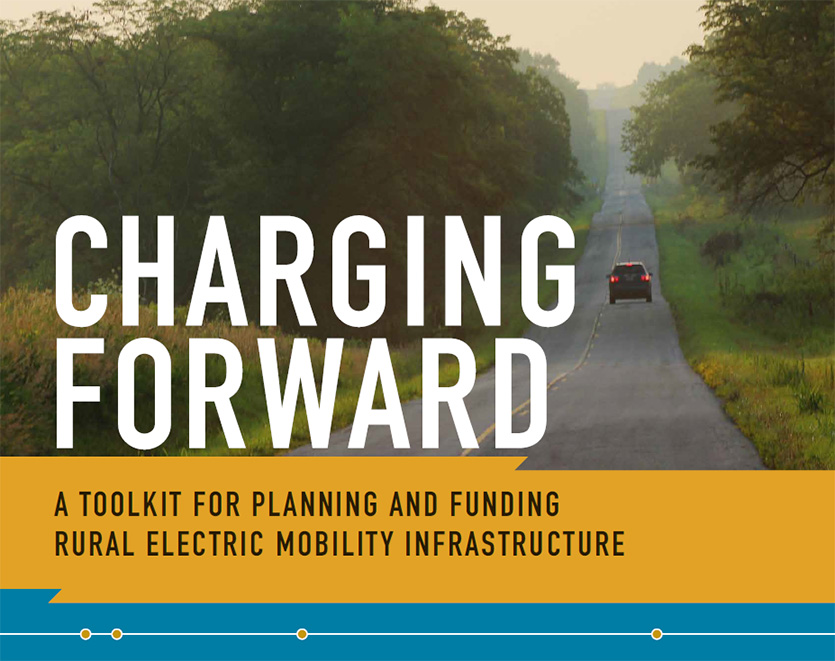
(Image Source: U.S. Transportation Department)
Toolkit for Rural Communities
The U.S. Transportation Department has published a one-stop resource, “Charging Forward,” to help rural communities scope, plan, and fund EV charging infrastructure. Rural property owners, businesses, towns, and planning agencies can use this toolkit to identify key partners, access planning tools, and source available funding or financing for their EV infrastructure projects.
“Charging Forward” focuses on infrastructure for light-duty EVs (sedans, sport utility vehicles, and pickup trucks) but also includes planning and funding information for transit buses, school buses, medium- and heavy-duty trucks, and agricultural tractors. Sections include:
- Electric Vehicle Basics
- Benefits and Challenges of Rural Vehicle Electrification
- Partnership Opportunities
- EV Infrastructure Planning for Rural Areas
- EV Infrastructure Funding and Financing for Rural Areas
- Resources for EV Infrastructure Planning
- Environmental Statutes and Executive Orders
Electric Cooperatives
Electric co-ops began about 80 years ago when rural residents joined to form their own electric companies to generate, transmit, and deliver electricity in their communities. Co-ops are non-profits that are owned and governed by their members. Today, more than 900 electric cooperatives are in operation, which together power over half of the U.S. land mass and serve about 40 million people.
Electric co-ops play an influential role in rural EV adoption by bringing charging stations and outreach programs to their service areas. They view these initiatives not only as a service to residents but as an economic necessity to continue attracting tourists and travelers as EV ownership grows.
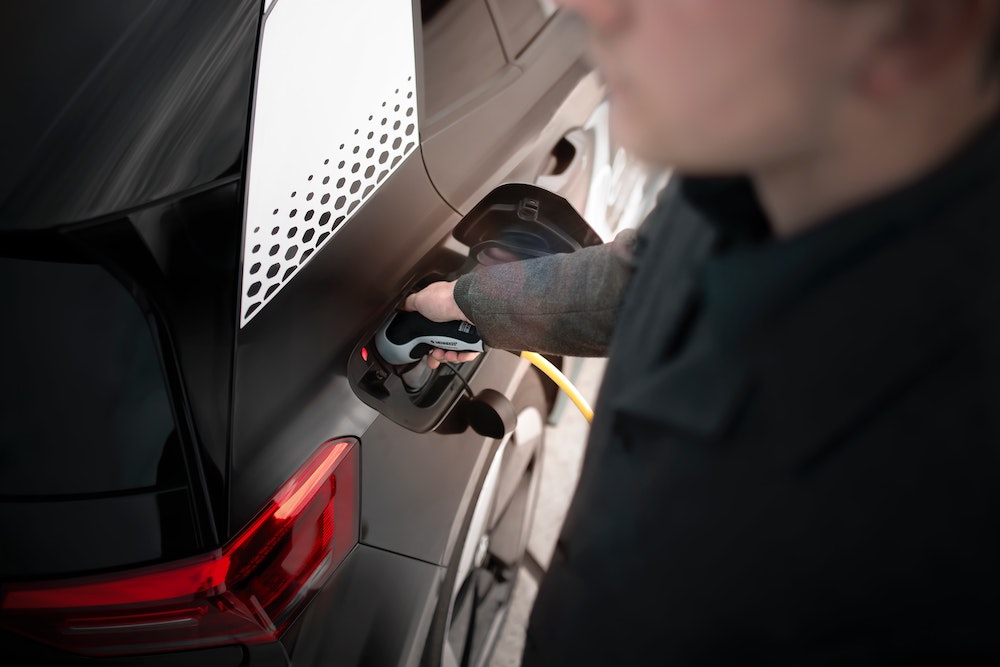
(Image Source: Maxim Hopman via Unsplash.com)
Tri-State Generation and Transmission Association
The Tri-State Generation and Transmission Association (Tri-State) launched its EV Experience Fleet in 2020. Tri-State bought several all-electric and plug-in hybrid vehicles, including sedans, minivans, and trucks, for loaning out to member cooperatives. The electric co-ops can borrow the vehicles for up to a month for staff use and local Ride & Drive events to give rural residents a chance to test-drive an EV. In addition, Tri-State established a detailed website promoting EV ownership and listing public charging stations within its service area.
Another Tri-State initiative is its EV Infrastructure program, part of its Responsible Energy Plan, which seeks to meet half of the association’s electric demand with renewable energy by 2024. For each of its members, Tri-State pays part of the infrastructure cost to install Level 2 or Level 3 EV chargers. Since 2020, the program has supported member installations of nearly 1,000 EV chargers, including 33 DC fast chargers.
Gunnison County Electric Association
Tri-State member co-op Gunnison County Electric Association (GCEA) became the first cooperative in Colorado to install EV chargers in 2015. and later began a program to let its consumer members test-drive an EV.
GCEA chief executive officer Mike McBride is quoted as saying that in his 21-year career with co-ops, he had never seen anything that created as much engagement as their EV test-drive program. “EV owners love to talk about and share their cars, and it turns out that members who get control of one exhibit the same tendency. They become ambassadors for both EVs and the co-op,” he said.
White River Electric Association
The White River Electric Association (WREA) installed two EV charging stations (one Level 2, one DC) in Meeker, Colorado, a remote mountain town of 2,300, in 2021. Since then, local businesses and tourists have responded. Tourists have even called ahead to confirm the EV charger locations as they mapped out their vacation itineraries.
Conclusion
Rural charging infrastructure remains the most significant barrier to EV adoption. Although major metropolitan areas average 65 fast-charging stations per thousand square miles, the national average is only 18 stations per thousand square miles. This compares to the national average of 960 gasoline stations per thousand square miles.
States can support adoption and decrease range anxiety for rural EV owners by increasing the density of charging stations in rural areas. Expanding the rural charging infrastructure will create a positive feedback loop. In response to more infrastructure, EV ownership rates will increase, which will fuel demand for additional chargers and increase EV adoption rates, which will fuel more demand and, in turn, higher adoption.
Are you interested in learning more about EV charging infrastructure and reliability? Join us at our EV Charging Summit & Expo!

